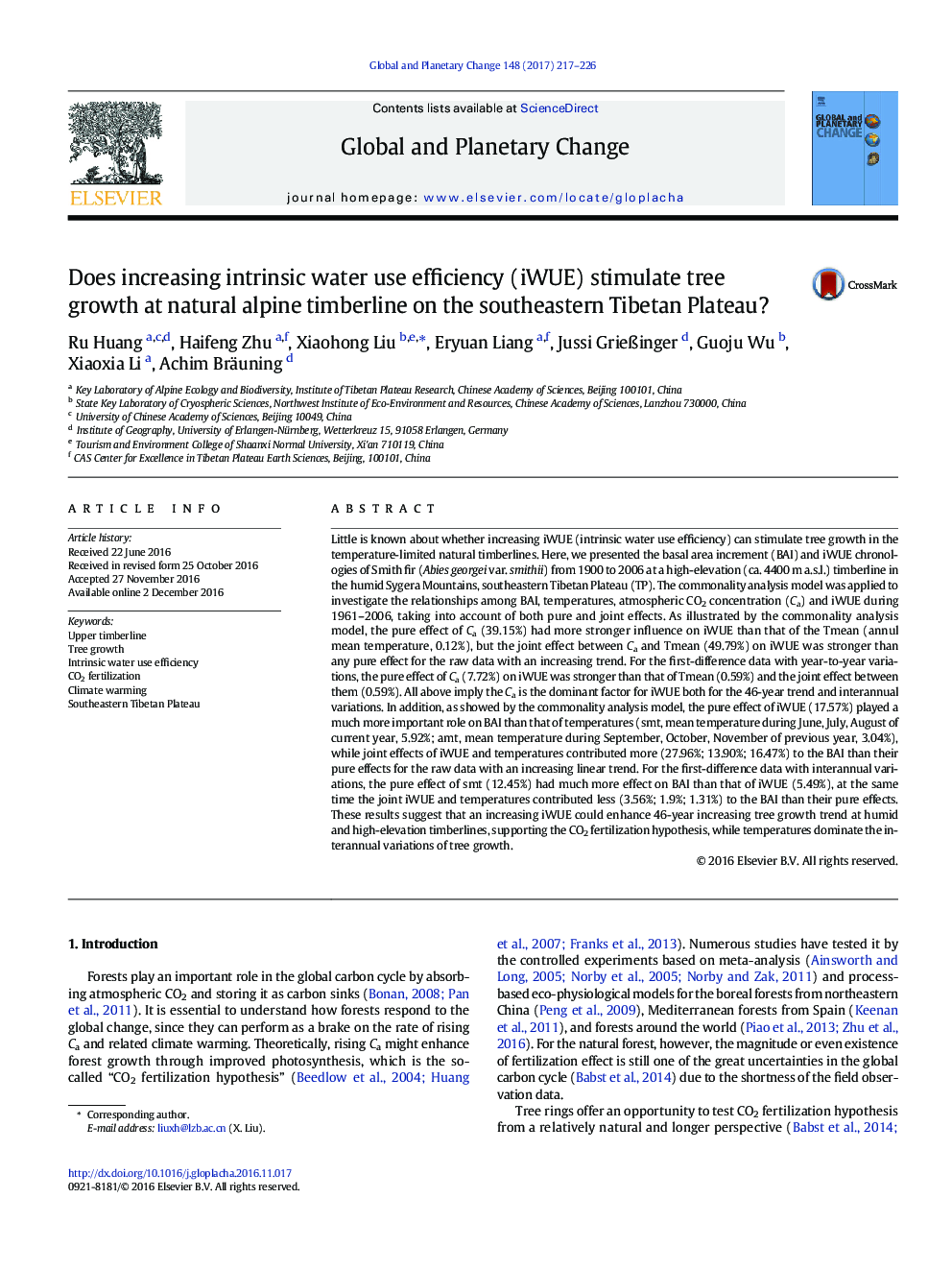| کد مقاله | کد نشریه | سال انتشار | مقاله انگلیسی | نسخه تمام متن |
|---|---|---|---|---|
| 5755366 | 1621634 | 2017 | 10 صفحه PDF | دانلود رایگان |

- BAI and iWUE of timberline trees have an increasing trend since 1900.
- Ca dominates iWUE for the 46-year increasing trend and interannual variations.
- Rising iWUE could stimulate BAI for raw data with the 46-year increasing trends.
- Temperatures control BAI at the interannual timescales.
Little is known about whether increasing iWUE (intrinsic water use efficiency) can stimulate tree growth in the temperature-limited natural timberlines. Here, we presented the basal area increment (BAI) and iWUE chronologies of Smith fir (Abies georgei var. smithii) from 1900 to 2006 at a high-elevation (ca. 4400 m a.s.l.) timberline in the humid Sygera Mountains, southeastern Tibetan Plateau (TP). The commonality analysis model was applied to investigate the relationships among BAI, temperatures, atmospheric CO2 concentration (Ca) and iWUE during 1961-2006, taking into account of both pure and joint effects. As illustrated by the commonality analysis model, the pure effect of Ca (39.15%) had more stronger influence on iWUE than that of the Tmean (annul mean temperature, 0.12%), but the joint effect between Ca and Tmean (49.79%) on iWUE was stronger than any pure effect for the raw data with an increasing trend. For the first-difference data with year-to-year variations, the pure effect of Ca (7.72%) on iWUE was stronger than that of Tmean (0.59%) and the joint effect between them (0.59%). All above imply the Ca is the dominant factor for iWUE both for the 46-year trend and interannual variations. In addition, as showed by the commonality analysis model, the pure effect of iWUE (17.57%) played a much more important role on BAI than that of temperatures (smt, mean temperature during June, July, August of current year, 5.92%; amt, mean temperature during September, October, November of previous year, 3.04%), while joint effects of iWUE and temperatures contributed more (27.96%; 13.90%; 16.47%) to the BAI than their pure effects for the raw data with an increasing linear trend. For the first-difference data with interannual variations, the pure effect of smt (12.45%) had much more effect on BAI than that of iWUE (5.49%), at the same time the joint iWUE and temperatures contributed less (3.56%; 1.9%; 1.31%) to the BAI than their pure effects. These results suggest that an increasing iWUE could enhance 46-year increasing tree growth trend at humid and high-elevation timberlines, supporting the CO2 fertilization hypothesis, while temperatures dominate the interannual variations of tree growth.
Journal: Global and Planetary Change - Volume 148, January 2017, Pages 217-226